Manuela Hürlimann
Error-preserving Automatic Speech Recognition of Young English Learners' Language
Jun 05, 2024Abstract:One of the central skills that language learners need to practice is speaking the language. Currently, students in school do not get enough speaking opportunities and lack conversational practice. Recent advances in speech technology and natural language processing allow for the creation of novel tools to practice their speaking skills. In this work, we tackle the first component of such a pipeline, namely, the automated speech recognition module (ASR), which faces a number of challenges: first, state-of-the-art ASR models are often trained on adult read-aloud data by native speakers and do not transfer well to young language learners' speech. Second, most ASR systems contain a powerful language model, which smooths out errors made by the speakers. To give corrective feedback, which is a crucial part of language learning, the ASR systems in our setting need to preserve the errors made by the language learners. In this work, we build an ASR system that satisfies these requirements: it works on spontaneous speech by young language learners and preserves their errors. For this, we collected a corpus containing around 85 hours of English audio spoken by learners in Switzerland from grades 4 to 6 on different language learning tasks, which we used to train an ASR model. Our experiments show that our model benefits from direct fine-tuning on children's voices and has a much higher error preservation rate than other models.
Dialect Transfer for Swiss German Speech Translation
Oct 13, 2023Abstract:This paper investigates the challenges in building Swiss German speech translation systems, specifically focusing on the impact of dialect diversity and differences between Swiss German and Standard German. Swiss German is a spoken language with no formal writing system, it comprises many diverse dialects and is a low-resource language with only around 5 million speakers. The study is guided by two key research questions: how does the inclusion and exclusion of dialects during the training of speech translation models for Swiss German impact the performance on specific dialects, and how do the differences between Swiss German and Standard German impact the performance of the systems? We show that dialect diversity and linguistic differences pose significant challenges to Swiss German speech translation, which is in line with linguistic hypotheses derived from empirical investigations.
STT4SG-350: A Speech Corpus for All Swiss German Dialect Regions
May 30, 2023



Abstract:We present STT4SG-350 (Speech-to-Text for Swiss German), a corpus of Swiss German speech, annotated with Standard German text at the sentence level. The data is collected using a web app in which the speakers are shown Standard German sentences, which they translate to Swiss German and record. We make the corpus publicly available. It contains 343 hours of speech from all dialect regions and is the largest public speech corpus for Swiss German to date. Application areas include automatic speech recognition (ASR), text-to-speech, dialect identification, and speaker recognition. Dialect information, age group, and gender of the 316 speakers are provided. Genders are equally represented and the corpus includes speakers of all ages. Roughly the same amount of speech is provided per dialect region, which makes the corpus ideally suited for experiments with speech technology for different dialects. We provide training, validation, and test splits of the data. The test set consists of the same spoken sentences for each dialect region and allows a fair evaluation of the quality of speech technologies in different dialects. We train an ASR model on the training set and achieve an average BLEU score of 74.7 on the test set. The model beats the best published BLEU scores on 2 other Swiss German ASR test sets, demonstrating the quality of the corpus.
Missing Information, Unresponsive Authors, Experimental Flaws: The Impossibility of Assessing the Reproducibility of Previous Human Evaluations in NLP
May 02, 2023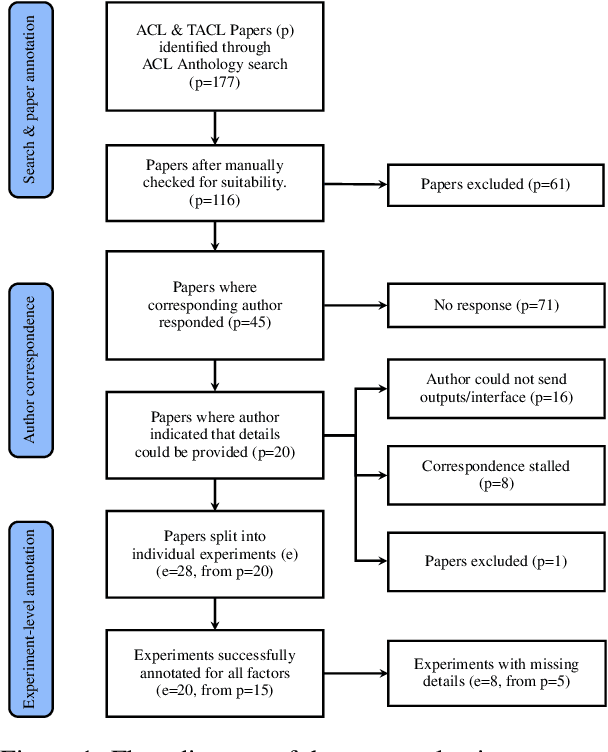
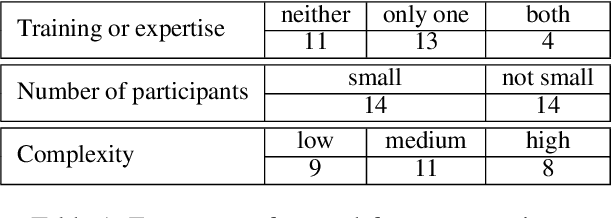

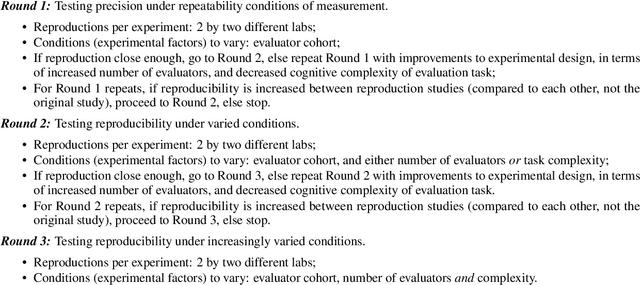
Abstract:We report our efforts in identifying a set of previous human evaluations in NLP that would be suitable for a coordinated study examining what makes human evaluations in NLP more/less reproducible. We present our results and findings, which include that just 13\% of papers had (i) sufficiently low barriers to reproduction, and (ii) enough obtainable information, to be considered for reproduction, and that all but one of the experiments we selected for reproduction was discovered to have flaws that made the meaningfulness of conducting a reproduction questionable. As a result, we had to change our coordinated study design from a reproduce approach to a standardise-then-reproduce-twice approach. Our overall (negative) finding that the great majority of human evaluations in NLP is not repeatable and/or not reproducible and/or too flawed to justify reproduction, paints a dire picture, but presents an opportunity for a rethink about how to design and report human evaluations in NLP.
SDS-200: A Swiss German Speech to Standard German Text Corpus
May 19, 2022
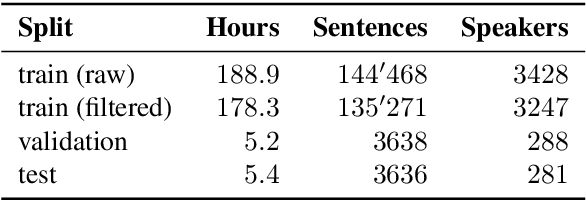
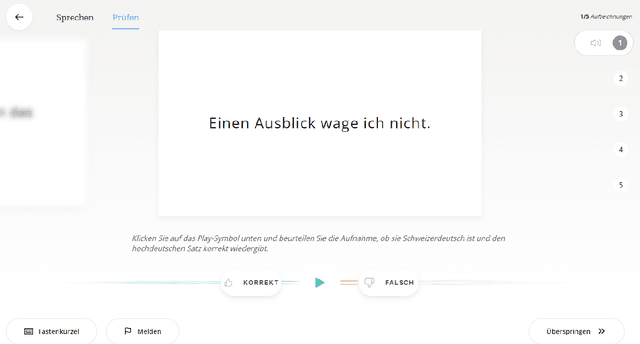

Abstract:We present SDS-200, a corpus of Swiss German dialectal speech with Standard German text translations, annotated with dialect, age, and gender information of the speakers. The dataset allows for training speech translation, dialect recognition, and speech synthesis systems, among others. The data was collected using a web recording tool that is open to the public. Each participant was given a text in Standard German and asked to translate it to their Swiss German dialect before recording it. To increase the corpus quality, recordings were validated by other participants. The data consists of 200 hours of speech by around 4000 different speakers and covers a large part of the Swiss-German dialect landscape. We release SDS-200 alongside a baseline speech translation model, which achieves a word error rate (WER) of 30.3 and a BLEU score of 53.1 on the SDS-200 test set. Furthermore, we use SDS-200 to fine-tune a pre-trained XLS-R model, achieving 21.6 WER and 64.0 BLEU.
 Add to Chrome
Add to Chrome Add to Firefox
Add to Firefox Add to Edge
Add to Edge